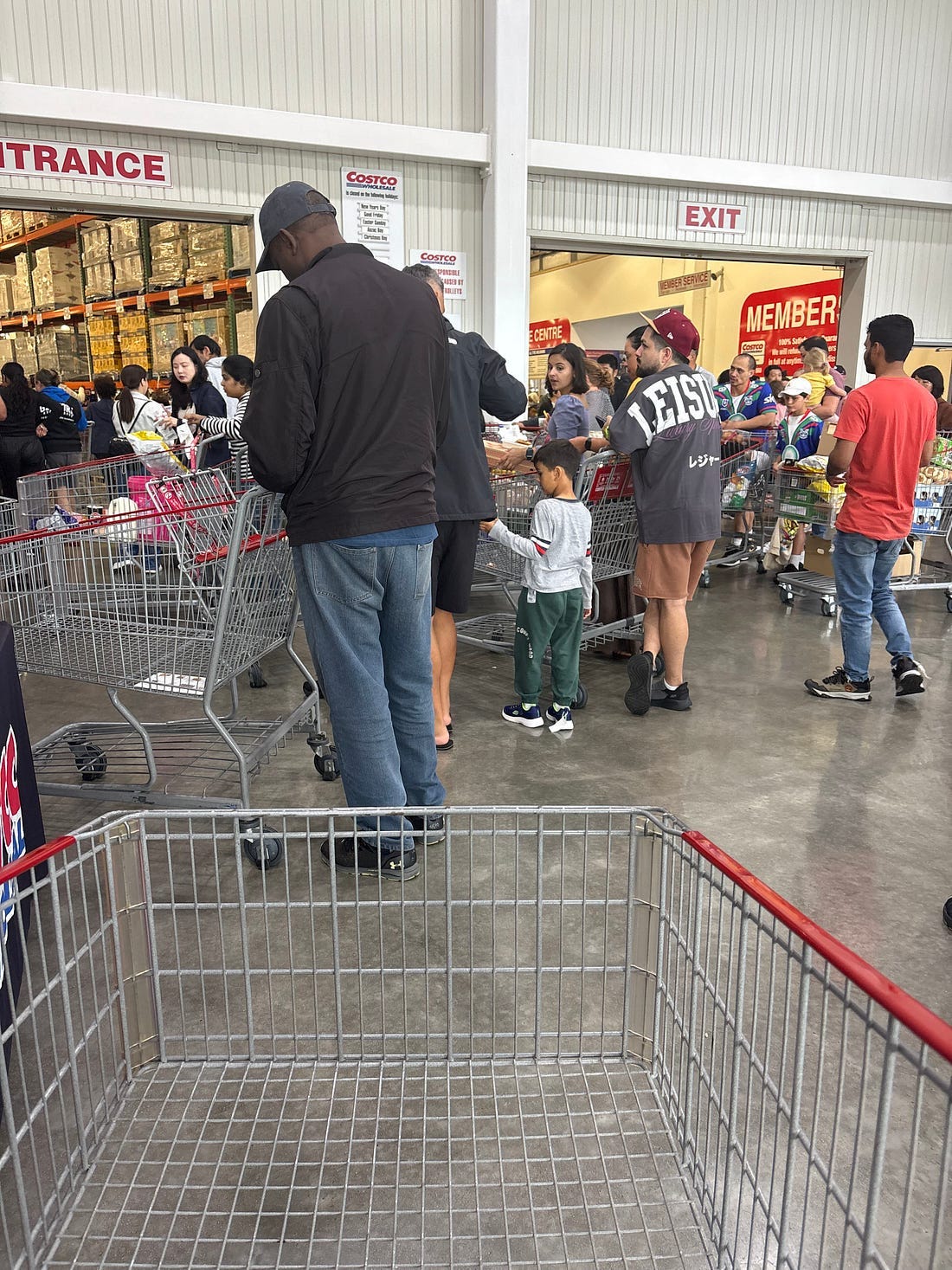Costco - a report from the frontline
I went to Costco in the weekend. Going to Costco on a Saturday after a public holiday is an unforced error, as one person put it to me. The aisles were a full display of humanity — people hurriedly pushing their massive trolleys around like a school of polyester-clad fish in the sea, frantically placing goods into their massive trolleys; lines and lines for the famous $1.99 hot dog, and yes, some good deals (and some deals that aren’t that good). I finally understood the “treasure hunt” atmosphere Costco management talks about so much — no wonder they generate so much revenue per square metre (rough math says they make about $24,000 per square metre in the NZ store alone). It was both a hectic and fascinating experience — to see the sheer amount of people clamouring over ordinary grocery items really told me something about the nature of human psychology.
While a lot has been said about Costco’s militant adherence to 14% gross margins on all product, I think it’s worth talking about the other formula at work:
Big trolleys + maze like design + lots of people = an atmosphere of excitement; more impulse buys.
Let me unpack that one a little more — if you’re hauling your massive shopping cart and you’ve got people at the back of you also hauling theirs, you can’t just sit still as you would at Woolworths. It’s like you’re on the northeastern motorway and you’ve got to keep truckin’ — so there’s little time to think about the purchase. You put it in your trolley and keep moving. The maze also felt deliberate — almost like they looked at one of those rats in a maze studies and said, yeah, let’s do that.
Of course, management can’t come outright and say “yeah, we made a rat maze” (and the reward at the end is the hotdog). But it’s clear this is what they’ve done — almost better than anyone. Perhaps we are all just rats in a cage.
On a broader basis, I think there are two business models which I understand and work well. The first is those that service a mass of people (see Google below) and command a near-monopoly-like position. Volume is key there; so you want something with a good barrier to entry. The other is the exact opposite — Hermes is the perfect model of this — where you produce less but can command as much margin as you want. There are many businesses which sit somewhere in the middle. They do less well, typically.
On that note — Google, or: why search isn’t dead
GOOG (Alphabet) just reported earnings — headline is “the news of search’s death is greatly exaggerated”. Or as Granny Weatherwax says “I atent dead yet”1.
Keep reading with a 7-day free trial
Subscribe to Elevation Capital Research to keep reading this post and get 7 days of free access to the full post archives.






